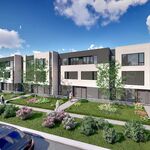So, if I were to read inbewteen the lines of your above post, I'm led to reach the conclusion that what you're implying here is that the OMB makes the 'correct' decisions when it comes to the development process ... actually, what you're implying is cities make the wrong decisions and builders (who of course have the best intentions in mind for the city) go to the OMB to remedy the 'wrong' the city comitted ...
'public interest' is what exactly here? Increasing profit for developers ... which in turn helps the local economy ... there's nothing wrong with this argument.
This isn't to say the cities are always correct either, in many cases, there's likely no correct answer, just a series of comprimies, but 'Unfortunately some local planning decisions are based on short-term political situations' ... really seems to imply the builder's know best as it is them who file greevences with the OMB.
I think we know at the end of the day the end goal for developers is not city building ... they could care less ...




